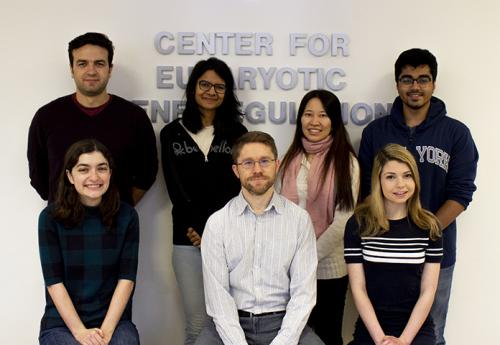Divyanshi Srivastava receives the 2020 Robert T. Simpson
Graduate Student Award for Innovative “Risky” Science

Divyanshi Srivastava, a graduate student in her sixth year at Penn State, in the Molecular, Cellular, and Integrative Biosciences Program, has been named the recipient of the 2020 Robert T. Simpson Graduate Student Award for Innovative, “Risky,” Science. The Graduate Student Award for Innovative (Risky) Science was created by the family of Robert T. Simpson in 2005 in memory of the former professor of biochemistry and molecular biology who embraced the concept of high-risk, high-impact research. The award was established to recognize an individual graduate student, working under the direction of a biochemistry and molecular biology faculty member, who has made important and innovative contributions in forwarding their research in their specific area of study.
Srivastava earned both her bachelor’s degree, in Computer Science, and her master’s degree, in Biology, from The Birla institute of Technology and Science in Pilani, India. She conducts her research, which focuses on investigating the determinants of transcription factor binding specificity and activity in distinct cellular chromatin contexts, under the guidance of Assistant Professor of Biochemistry and Molecular Biology, Shaun Mahony.
The human body has hundreds of different cell-types such as skin cells or blood cells, and in each cell the DNA is identical. How then are these cells so different? What determines the differential identity of cells? The human genome contains ~20,000 genes, many of which are differentially expressed in distinct cell-types. Differential gene expression programs are controlled by proteins that bind DNA and either activate or repress target genes. These proteins are termed transcription factors (TFs), and hundreds of TFs orchestrate gene expression programs, which in turn controls cellular behavior and identity.
Unfortunately, how TF’s bind DNA is unclear. One of the reasons for this is that DNA is often packaged differently within different cell-types. For example, different parts of the genome may be accessible for TF binding within different cell-types. Accessibility of TF binding motifs is controlled by proteins such as histones and histone chemical modifications, which we can collectively refer to as the "chromatin environment".

Srivastava’s research attempts to model the effects of cell-type specific chromatin environments on TF binding. Her research focuses on investigating the degree to which sequence motifs and preexisting chromatin explain TF binding. She developed an interpretable neural network framework that integrates sequence and preexisting chromatin accessibility in order to identify both the global and per-site predictors of TF binding sites in the genome. This approach is applicable to multiple TFs, and can be used to identify a TFs relative dependence on the preexisting chromatin landscape.
In additional joint work with the Milica Bulajić at the Mazzoni Lab in NYU, Srivastava investigated the binding of Hox transcription factors in progenitor motor neurons. The HOX transcription factors are expressed early in embryonic development, and are responsible for the specification of positional identity. Bulajić and Srivastava modeled the binding of Hox TFs in progenitor motor neurons using both experimental and computational approaches. Their findings showed that posterior vertebrate HOX TFs, such as HOXC9 and HOXC10, bind the same sequences in the genome, yet activate different genes and specify distinct types of mature motor neurons.
Further investigation by Bulajić and Srivastava showed that this occurred due to HOXC9’s ability to bind its target sequences in inaccessible chromatin, while HOXC6 and HOXC10 are unable to do so. They concluded that in addition to DNA’s sequence, the chromatin environment, which controls DNA accessibility, can result in differential binding and hence the differential activity of HOX TFs.
The department is fortunate to be a part of many collaborative efforts spanning units across the University. The environment these collaborative efforts provide has allowed the department the opportunity to work with amazing graduate students from other graduate programs in order to continue to push the boundaries of scientific discovery. The Biochemistry and Molecular Biology Department is proud to work alongside students like Divyanshi Srivastava and congratulates her on being the recipient of the 2020 Robert T. Simpson Graduate Student Award for Innovative “Risky” Science.

About Robert. T Simpson:
Simpson was an international leader for more than 35 years on the topic of chromatin, a fundamental component of chromosomes, and its role in gene regulation. Simpson conducted research at the National Institutes of Health (NIH) from 1970 until 1995 when he became the Verne M. Willaman Professor of Molecular Biology at Penn State. His addition to Penn State is considered to have placed Penn State and the Department of Biochemistry and Molecular Biology at the forefront of chromatin research and has greatly enhanced Penn State's research and educational missions.